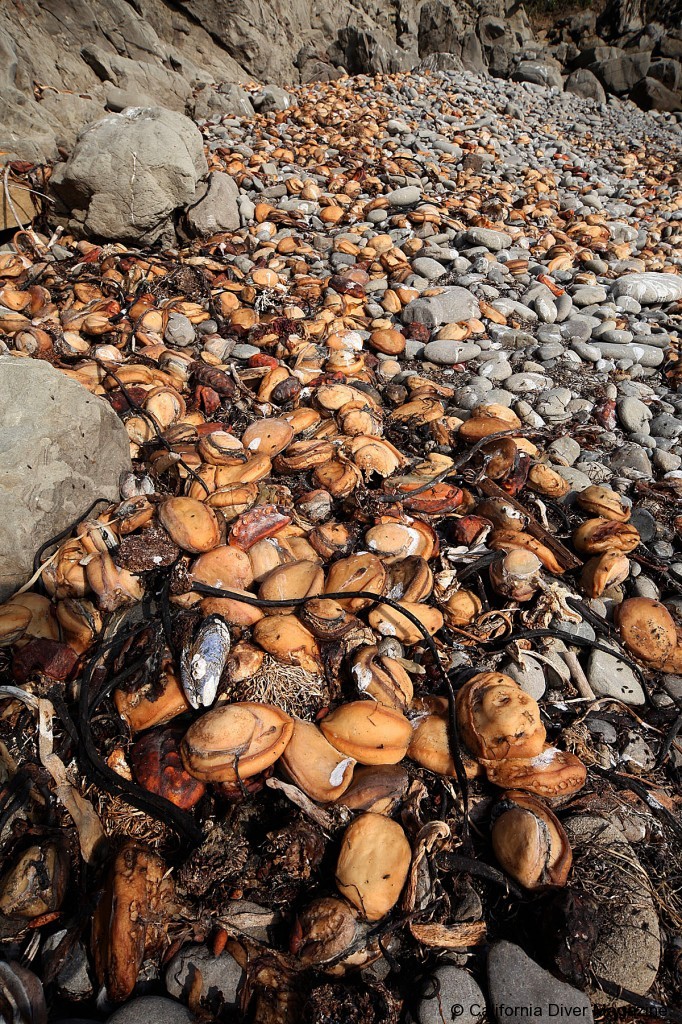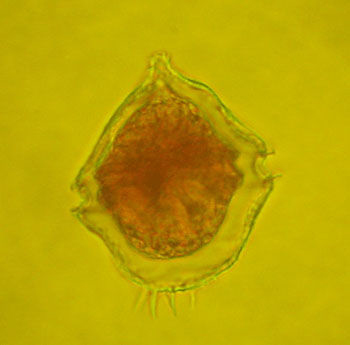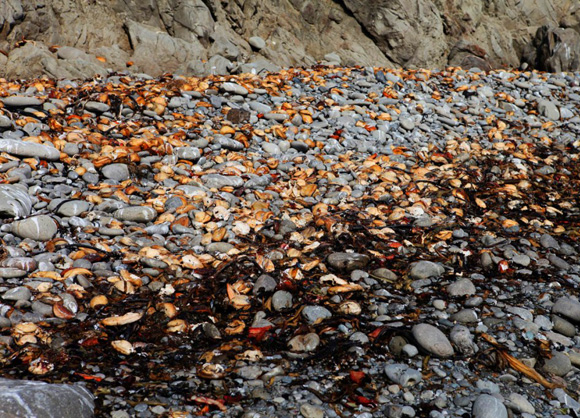In 2011, abalone living in some areas of the Sonoma and Mendocino coast were killed by the thousands by an unknown toxin in the water. Today, nearly 3 years later, scientists know what it was that killed them. The toxic “red tide” wasn’t the same as other commonly-occuring red tides – this one killed thousands and littered the shoreline with the remains of dead abalone, starfish, urchins, and other mollusks.
The unique event that took place also piqued the interest of scientists worldwide, and an intensive effort to find out what caused the massive die-off in 2011 led to at least one significant advance which is detailed in a study published in the April 16 issue of the scientific journal Nature Communications. You can read the article here.

A few of the victims of the die-off. Photo taken near Fort Ross, CA.
A team of scientists and geneticists used a new forensic genome testing techniques to identify a poison-producing micro-organism known as Gonyaulax spinifera, a species of phytoplankton rarely found in this part of the world.
From the report, “In water samples collected from Bodega Head, Fort Ross and Salt Point during the bloom, the dominant phytoplankters were dinoflagellates belonging to the Gonyaulax spiniferaspecies complex. The algae were identified by Adele Paquin (Sonoma State University) and Gregg Langlois (CA Dept Public Health), and were subsequently confirmed by Rita Horner (U. Washington) and Charles O’Kelly (Friday Harbor Labs).”
“One part of this organism’s life cycle is when it becomes a cyst, like a spore or seed, that sits on the bottom,” said Laura Rogers-Bennett, a research associate for UC Davis’ Bodega Marine Laboratory in Bodega Bay. “When the environmental conditions become optimal – and we don’t know what those conditions are – these cysts can burst out of their little seed pods and come back to life. The worry is that when they bloom we get these giant red tides.”

Gonyaulax spinifer
Scientists were assisted from biologists who had taken tissue samples from red abalone for another experiment before the mass deaths. The forensic team used the data to compare hundreds of thousands of genes from abalone before and after the die-off event. They found alterations in at least 30 of those genes, and found their function was to detoxify the body after a Yessotoxin attack.
__________________________________________________________________________________
[poll id=”7″]
“This is a brand-new genetics method. We were able to look at all of the genes, which we were never able to do before,” she said. “We were able to identify the cause by identifying what’s different before and after. I think this method is going to be used for a whole suite of natural events that hit wildlife. It’s broadly applicable.”
Fortunately there have been no large abalone die-off events in California since 2011, although red tide conditions come and go frequently as a natural occurrence.
While abalone season is still open on the north coast, restrictions have been significantly increased. The annual limit has been reduced to 18 abalone per diver each year (and only 9 may be taken in Sonoma County), and Fort Ross remains closed while it recovers from the die-off.
—————————————————————————————————————————————-
Related stories from our archives:
Huge Abalone Die-Off on Sonoma Coast
Sonoma County Abalone Die-Off: Photos & Update
F&G considers immediate closure of abalone season
—————————————————————————————————————————————-

